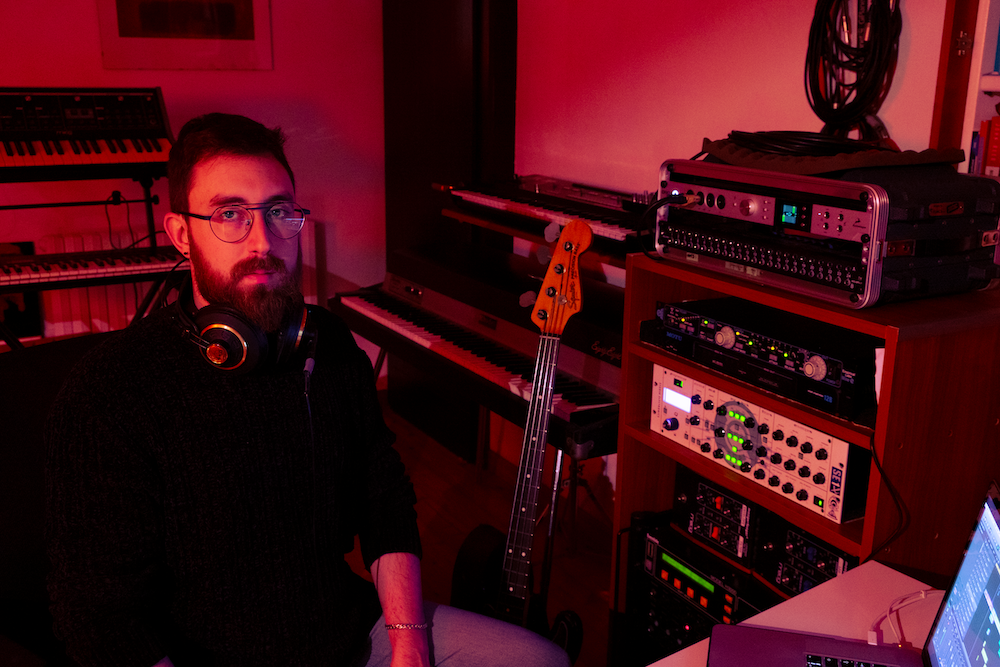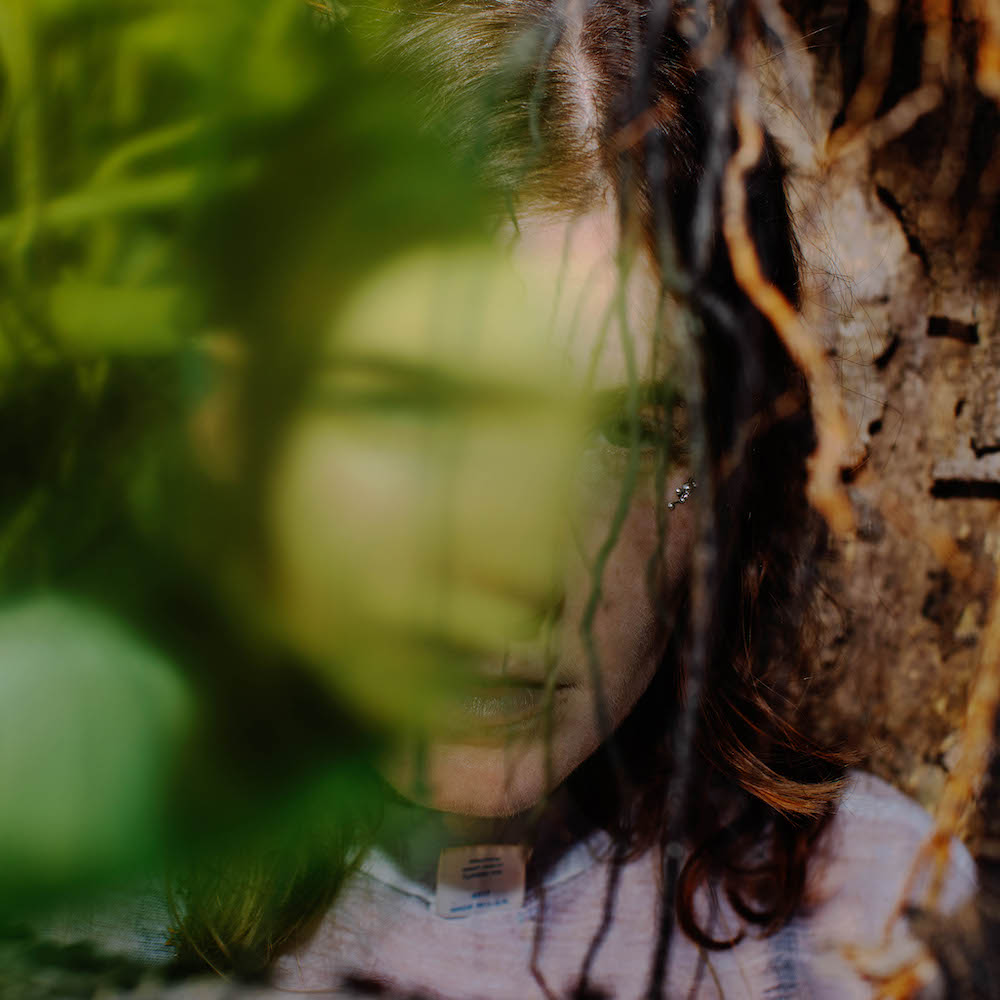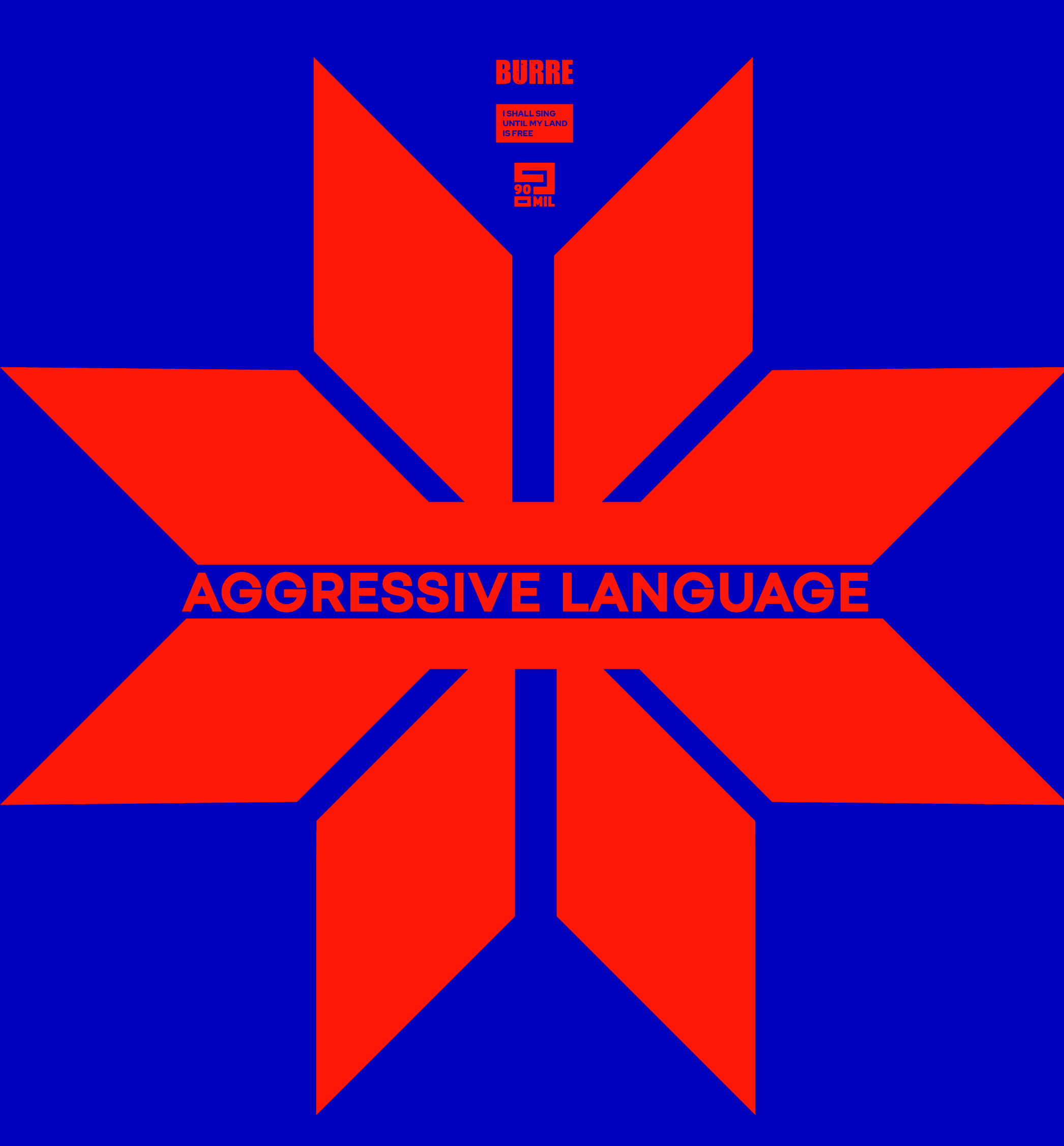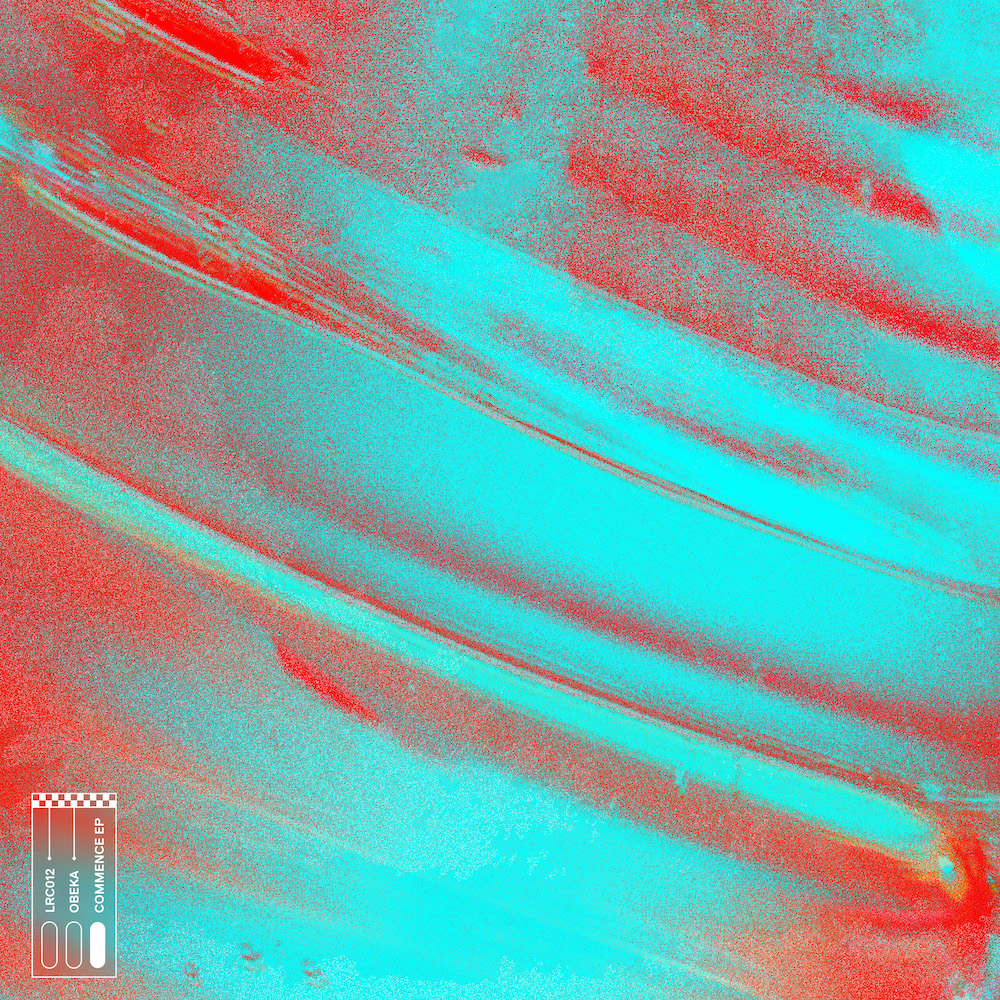Borrowing Aesthetics: AT-XYA, James K & Eric Demuro dissect new album

Exploring the narrative behind a new experimental Pop album to emerge from New York City.
Fronted by AT-XYA, who is perhaps better known by the moniker of Autre, ‘Antystar’ is the title of a new collaborative album which features the talents and contributions of James K and Eric Demuro.
The record is a left turn of sorts for a producer who has been perhaps more typically associated with club music. Drawing upon influences from the likes of 90’s shoegaze, dream pop and the spaces in between it is a kaleidoscopic assortment of colourful, synth driven soundscapes and delicate textures which make up an ethereal dreamy listening experience which pays homage to the past whilst looking firmly forward into a new future.
Keen to draw upon a number of social and cultural references, there is a lot to take in across the record which is built upon a narrative trifecta from a shared interest in gender theory studies, including the writing of Judith Butler and Donna Haraway, and the post-human theories of Rosi Braidotti, spanning ambient, post-modern pop and abstract jazz.
James K and Eric Demuro are both uniquely talented and independent, having established themselves as artists and musicians in their own rights respectively. Their pairing alongside AT-XYA makes sense in what is a new context for the three.
With a number of creative influences at play, as well as drawing upon social theory and psychology, the project is ambitious and playful in equal measure – testing the boundaries of what could be considered “Pop” in the current climate.
We asked them to discuss the album.
First of all, describe the initial concept behind this album and what role you feel that played in its evolution?
“AT-XYA is a visual and musical exploration of the posthuman conditions originating from our contemporaneity. AT-XYA output consists of aesthetic moods of uncertainty which push us to reimagine and re-envision our present condition. AT-XYA wants to bring the audience to a collective hallucination where our minds are expanded in favour of collective enlightenment. Generally speaking, music-wise, AT-XYA borrows different aesthetics to deconstruct them and represent them to the audience as a new awareness of the present.
Antystar is the last album of a trilogy meant to introduce the whole project. The trilogy represents the three stages of the AT-XYA manifesto. In Antystar the visions of different artists are merged together in order to create a panchromatic vision of our contemporaneity, where past, present and future are one sole experience and where a collective, yet unique, dialogue between humans, technology and nature is established.
“Minds are expanding. The contemporary reality is no longer our daily vessel. We are now projecting ourselves into the constantly evolving form of free space. Our bodies are no longer our cage, our minds no longer set our vision. The collective one is now formed.
Flesh is evolving. The nature of our bodies is no longer our burden. The extensions envisioned by our expanded minds are the only possible transcendent act of mutation. The departure from the singular is accomplished. A tumultuous collective orgy of flesh and technology is now the one.
Our visions are merging. The multitudinous interpretations of the “now”, are sacrificed in favour of collective enlightenment. The singular aesthetics are now surpassed. A panchromatic collective vision of the future is the new ‘now’. “
* AT-XYA Manifesto
What were the mutual influences behind the release?
AT-XYA: For this specific album, as musical influences, definitely a big general one for me was the sound of 70s synthesizer music and 80s soundtracks. They both have that kind of nostalgic idea of the future, which no longer exists as a possibility as of now. Speaking of soundtracks, in that period I got fixated on the movie Beyond the Black Rainbow, directed by Panos Cosmatos, which has a sick soundtrack by Sinoia Caves. Of course, also more classic references as the early Warp ambient works contributed as an aesthetic inspiration… but there is a lot of jazz too, hidden between synthetic sounds.
JAMES: An early instrumental version of the single Antystar was given to me and I fleshed out the structure, melody and lyrics around what I felt the track needed to speak, what it was inspiring in me. At the time, it was soon after the heart of lockdown and people were just starting to go outside, though nothing was really open yet. There was a need in me to connect, but I was also processing what we were all feeling for months-adjusting to a semi-bleak landscape of virtual communication, humanity’s reliance on technology, and with this predicament, the ever faster rise of algorithmically curated information. The communities and views resulting from this, feeling like echo chambers, little bubbles, formed through our interests and fed back through equations to continue our engagement (with consumer technology). I felt the absence of contact, with people and physical environments, my soul ached for it very deeply during this time. The instrumental was already titled ‘Antystar,’ and I interpreted that name to reflect some of these feelings I had towards this ‘bright light’ of communications technology that, it felt, was consuming existence at the time. The initial instrumental reminded me of this pop hopefulness that I love from early italo tracks, so I leaned into creating a feeling of the catchy, light hooks, you find in italo tracks, but the lyrics focused on these feelings I was having at the time – a sense of urgency to express myself as a fight against the complacency I was feeling being stuck in this sludge of techno-convenience. I doubled down on the pop song aspect of it, by metaphorically defining the word antystar to a pop song ‘hit’- what it feels like to be fed mainstream pop music, which is also a practice in algorithmic, consumer-approved products. The point of the song was to lean into its catchy pop essence, but also perform emotionally and lyrically a negation of aspects of larger pop-culture. It’s a fight song in a way.
And so far, they don’t play to us
We’ll never leave who we are all our lives
Lay another hit right onto me
Yea, that song, it leaves them knocked down and blind.
(antystar!)
ENRICO: Also in my case, the biggest influences were 80s soundtracks and 70s music in general, which I have been obsessively listening to and studying for a few years now. I was, and still am, very influenced by the Los Angeles scene, from the historic Stones Throw label to the more recent Leaving Records. I love how the LA scene freely experiments between different genres digging deeply into various musical and cultural heritages. Another relevant influence from the period of this project was certainly the filmography of David Lynch. For the Antystar album, I looked at how to combine Prince funk bass into a Oneothrix Point Never or a James Ferraro song…I wondered how a Larry Graham funk bass line or the more rock Jack Bruce would sound in a Tangerine Dream song… That was my creative starting point.

AT-XYA
To what extent do these influences inform the music itself and can you pinpoint any particular examples of this across the record?
AT-XYA: The references mentioned above served as starting inspiration for specific moods I wanted to explore. My creative process is not particularly bound to any specific practice or routine, so I wasn’t actively chasing specific elements related to those references. The nature of the AT-XYA music project strives to be unbound from the necessity of fitting specific contemporary aesthetics. AT-XYA takes what’s around us, deconstructs it, re-imagines it and proposes it back to the audience as a new starting point.
ENRICO: I believe these influences informed the composition process a lot. In my case, I started from specific references, I deconstructed and reconstructed them on the song in question always trying to understand, capture and amplify Pietro’s creative vision…Then I worked on the sound through the use of different specific preamps and finally with iconic effects such as the Eventide H3000 to achieve that retro 80s texture and specific aesthetic. With one foot in the past, however, I tried to experiment, have fun during the creative process and be innovative!
Judith Butler often reflects on the nature of performativity, to what extent do you feel this project lends itself to a similar expression?
AT-XYA: A lot to say here about literature references… the AT-XYA project wants to propose an aesthetic representation (both visual and musical) of the posthuman condition we are experiencing in this historical moment. Posthuman condition is meant as a tool to navigate the continuous mutations steered by advanced technological development, climate change and the decline of late-stage capitalism. We are in a predicament of conflicting forces, advancement and decay at the same time, and this affects both the social environment and our shared emotional landscape. There is a need for a collective rethinking and acceptance of our identity as humans on this planet in order to actively react to our condition effectively, and not be overwhelmed by the perpetual and coexisting feelings of excitement and anxiety. To cite one sentence from Rosi Braidotti that resonated with me a lot
“We are currently positioned between the Fourth Industrial Revolution and the Sixth Extinction”.
In my opinion, the nature of performativity and gender reality presented by Judith Butler set one of the key understandings and realizations that we, as humans, must address in relation to our identity. The fact that gender is not tied to material bodily connotations but uniquely to social constructs and fiction, hence the performance, allows us to open everything to mutation and contestation. This, in my opinion, offers one of the starting points to proactively tend towards the above discussed posthuman condition.
The AT-XYA representation of this sentiment is reflected in the deconstructing and regurgitating of pre-existing aesthetics, bringing the audience to a collective comfortable-uncomfortable hallucination which accompanies them to re-image, re-think and experience a shared (yet unique) intellectual mutation towards the posthuman condition. AT-XYA wants to bring the audience to a state where, at the same time, a fundamental identity question is posed and the coexistence of humans, nature and technology is presented.
ENRICO: Just to add to what Pietro said… Technology can really shape our identity and our bodies. In line with Haraway, technology here is intended as a tool to free us from socially constructed identities. We can now create new identity forms which don’t invalidate or destroy the past, but transform it into something new. Our past shouldn’t be preserved as a museum and contemplated but, instead, transformed with innovation and experimentation: which is what AT-XYA music aims for.

Eric Demuro
There are futuristic elements dotted throughout the release, paired alongside 90’s esque shoegaze and post punk, how do these two worlds align for you?
AT-XYA: I guess the outcome of what I’ve described above in terms of musical influences and “borrowing existing aesthetics” results in a mashup of elements pertaining to different genres. All the styles you mentioned are part of my daily soundtrack. I personally space a lot through different styles of music… I can spend the morning listening to the most laid-back ambient music and going through a punk hardcore phase in the afternoon. I guess all these diverse influences subconsciously end up in my music too. However, I see one common point in relation to futuristic sounds, shoegaze and post-punk, which is the tendency to create lush ambience moods, and this is definitely something that I look for in my music too. I guess you can tell I’m big on reverbs.
“Technology can really shape our identity and our bodies.”
How did you go about the process of collaboration?
AT-XYA: When I started the AT-XYA project I ended in a creative spiral after which I found myself with a huge collection of tracks after 6 months or so. The original idea began as one big album but was later converted into three separate projects that all tell the same story from different perspectives. I was definitely interested in bringing other people on board on this project, I wanted AT-XYA to be inclusive and a project where multiple artists can have a say in its evolution. By its nature, I wanted AT-XYA to be a dialogue between my synthetic music (technology) and organic elements (human and nature). Therefore, I was very much interested in including a singer and an instrumentalist. At first, I was struggling to find singers who would also fully understand the essence of the project and could embrace the whole aesthetic I wanted to represent. I was a big fan of James K’s album Pet, which I was often playing in shows here and there. So, I decided to contact her and we agreed to exchange some music. I guess the nature of James’ music and how she works with her voice, heavily modulated and rich in effects, was definitely a great fit with my lush synth landscapes. Being James K a producer herself, her contribution to the album has been essential also on the writing and production side and not only for vocals.
A lot of the melodies and chord progressions in my music are based on some of my favourite spiritual jazz artists… but on the other hand, the sound wants to be somehow very digital and synthetic, decontextualising the harmony. Again here it was not straightforward to think of a good musician who could capture the essence of that. However, it was a no-brainer to include my old friend Enrico Demuro, who is an amazing bass player. We have a lot of common musical and literary influences, so we could really establish a good dialogue and understanding of where the music was going. Also in his case, his contribution at a writing and production level has been significant.
ENRICO: It all started very naturally… Pietro and I are old and close friends and I was intrigued by Pietro’s new project. I was immediately captured by the philosophy and literature that inspired him. In addition to being a musician, I also have a degree in philosophy and my current job is in that field. I have dedicated myself to the philosophy of difference from Deleuze and Foucault to Judith Butler, Irigaray and Haraway’s Cyborg Manifesto… so everything fitted perfectly! When Pietro told me that he had involved James K in the project things got even better. I was already a listener of James’ music since I discovered his voice on a track by Yves Tumor for Warp Records. James’ voice on AT-XYA’’s album changed the composition and production a lot, making everything more human and approachable for the listener… So as a consequence, I also began writing different bass lines. I started with Antystar and the result with James’ voice immediately convinced all three… from there I continued to write different lines for the other songs and the most convincing ones were selected. Working on this project was challenging but also very natural. Obviously, it wasn’t the first time we made music together. Despite our jobs and other commitments, we are both very dedicated to music and very meticulous and obstinate to achieve what we have in mind.
JAMES: As Pietro mentioned, he reached out to me, and I listened to early versions of some of the tracks and felt I had ideas that I wanted to execute that might add something new to the vision. I didn’t go into the production or writing process with specific influences, I just generated material around what I felt could be interesting to hear intertwined with the production Pietro had given me. I approached each track differently, depending on what I felt it needed, or what I ‘heard’ it could go towards. Some were much looser, more soundscapes with blurred legibility, using the voice more as an abstract sound source exuding emotional intimacy, and some more structured, legible and direct. We collaborated solely via email, i.e. he sent me early versions, I worked in my studio, and then sent things back and forth. The process was fluid, organic.

James K
Why did you feel that NOW was the time to deviate from club focussed material?
AT-XYA: I started this project in mid 2020 and at that time I had just finished writing my PhD thesis in Physics so my mind has been definitely on a different planet for a while. At that time I had lived in Berlin for 6 years and was involved in the club music scene for a while with my other project Autre, which focuses on dance music. Probably the combination of being a bit fed up with the scene, having been disconnected from it for a little while and the lockdown pushed me to start something new. I was feeling a sort of stagnation of creativity around me, where artists were constantly chasing new-cool-aesthetics instead of actually generating new content. It just felt that dance music became too disposable. Just to clarify, I’m not saying that there’s no cool music happening anymore in the club scene, but for my creative process, it just started feeling like a perpetual citation of the past. In the meantime, I guess the socio-political situation worldwide was also making me think a lot about all the stuff I discussed above… So also because of that, I had the urge to start something with a bit more depth.
Buy the release HERE.





















Must Reads
David Holmes – Humanity As An Act Of Resistance in three chapters
As a nation, the Irish have always had a profound relationship with the people of Palestine
Rotterdam – A City which Bounces Back
The Dutch city is in a state of constant revival
Going Remote.
Home swapping as a lifestyle choice
Trending track
Vels d’Èter
Glass Isle
Shop NowDreaming
Timothy Clerkin
Shop Now